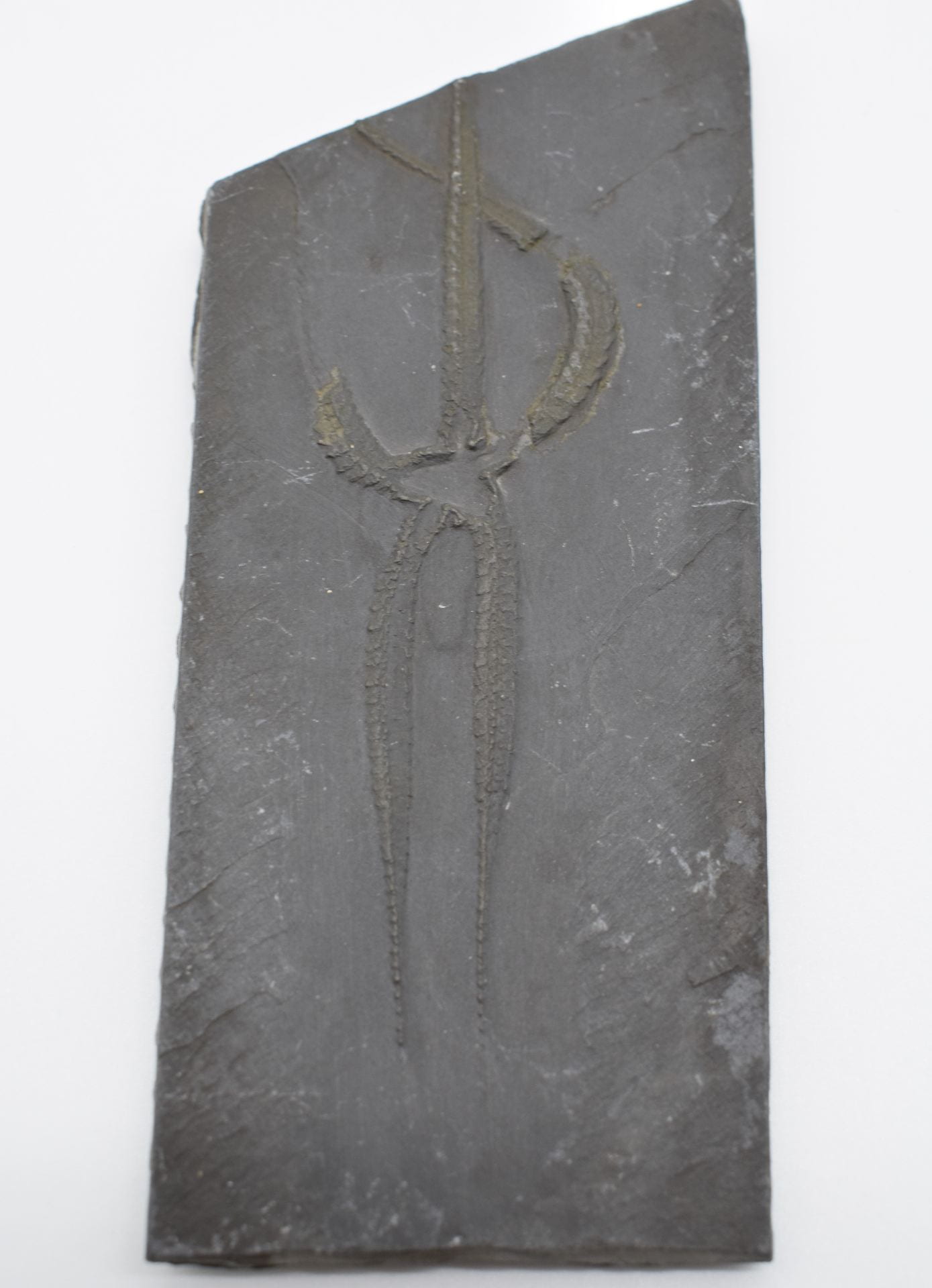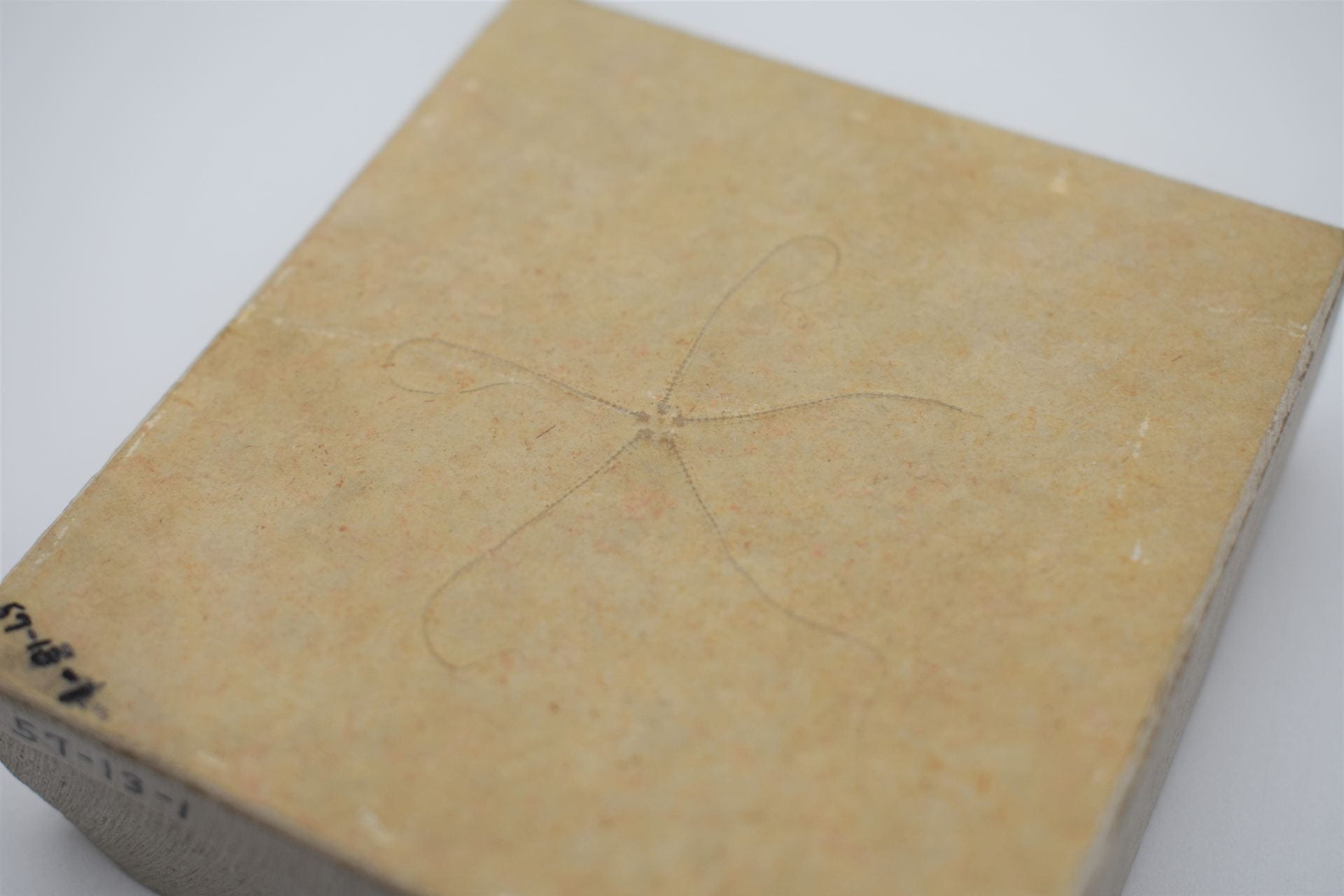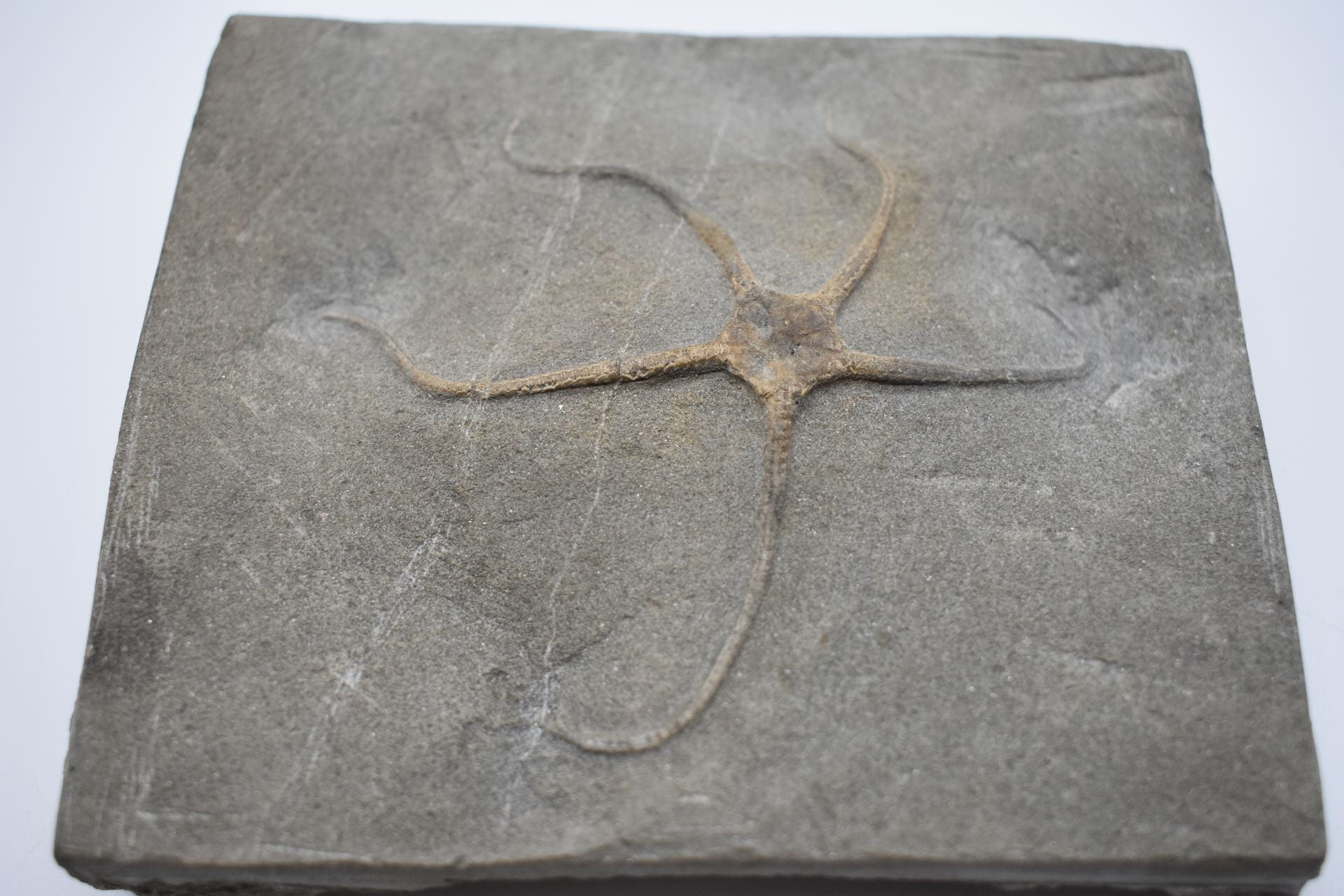Holiday Countdown
Day 23: Star
Author: Laurel Lamb, Curator of Education and Engagement
Today’s theme is all about stars. You might think I’d focus our attention upward to the sky. Instead, we’re looking down – at fossil specimens found on earth.
Beyond the obvious fact they are shaped like stars, these fossils are like their counterparts in the sky because they both inspire awe within me.
When we look at them, we’re looking back in time. Fossils are time capsules of animals that lived long ago. Think about it – an image of these once living creatures managed to survive across millions of years. And the lights we see in the sky today are from the light of stars in the past. Even when we look at the star in our own solar system, the Sun, we’re seeing it as it was 8.3 minutes ago. It’s amazing!

The first specimen is a starfish, or sea star. They are members of the Asteroidea class, which translates to “star-like” in Greek. Pretty fitting, right?
The earliest known starfish fossils date back to the Ordovician period 450 million years ago. Today, these animals are found all over the world’s oceans with approximately 2,000 living species. They are not fish.

You likely had heard of starfish before, but what about a brittle star?
This is a fossil of an extinct brittle star, Geocoma carinata, from Germany. They are similar to starfish, but not the same. While both animals are echinoderms, they are classified under two different taxonomic classes – brittle stars Ophiuroidea, starfish Asteroidea. You can learn more about them here.
Here is one last specimen to share with you:
